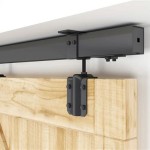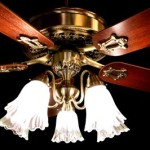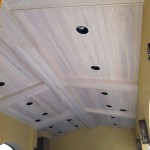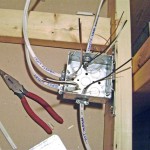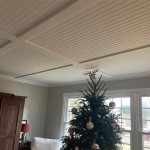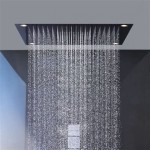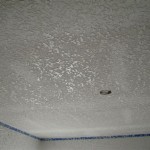Exterior Porch Ceiling Ideas: Enhancing Curb Appeal and Outdoor Comfort
An exterior porch ceiling is more than just a covering; it is a design element that contributes significantly to the overall aesthetic of a home, enhances outdoor living spaces, and provides protection from the elements. Selecting the right porch ceiling involves considering style, material, functionality, and cost. This article explores various exterior porch ceiling ideas, offering insights into materials, design considerations, and installation factors.
Understanding the Importance of a Well-Designed Porch Ceiling
The porch ceiling plays a critical role in defining the character of a home’s exterior. It provides a visual connection between the structure of the house and the outdoor environment, contributing to the perceived size and openness of the porch area. A well-designed ceiling can also impact energy efficiency by providing shade during the summer months and helping to retain heat during colder periods. Beyond aesthetics, the porch ceiling offers practical benefits, such as shielding the porch space from rain, sun, and debris, extending the lifespan of outdoor furniture and creating a more comfortable and usable outdoor living area.
Furthermore, a properly installed and maintained porch ceiling can deter pests like birds and insects from nesting in the porch area. This directly contributes to a cleaner and more enjoyable outdoor experience. The right ceiling material can also improve the acoustics of the porch space, reducing echo and enhancing sound quality for outdoor gatherings. In essence, a thoughtfully designed porch ceiling is an investment that enhances both the beauty and functionality of a home.
Exploring Different Porch Ceiling Materials
The choice of material is paramount when designing a porch ceiling. Different materials offer varying levels of durability, aesthetic appeal, and cost-effectiveness. Some common materials include wood, vinyl, metal, and composite materials.
Wood: Wood ceilings offer a classic and natural look, providing warmth and character to a porch. Popular wood choices include pine, cedar, and redwood. Pine is a more affordable option, but it requires regular painting or staining to protect it from moisture and insects. Cedar and redwood are naturally resistant to decay and insects, making them more durable choices, although they are typically more expensive. Wood ceilings can be installed in various patterns, such as tongue-and-groove, beadboard, or shiplap, allowing for customization of the aesthetic. A significant drawback of wood is its susceptibility to moisture damage, warping, and insect infestation if not properly maintained. Regular maintenance includes cleaning, sealing, and painting or staining to preserve its integrity and appearance.
Vinyl: Vinyl porch ceilings are known for their durability, low maintenance, and resistance to moisture and insects. Vinyl is a synthetic material that does not rot, warp, or splinter, making it a practical choice for areas with high humidity or frequent rainfall. Vinyl ceilings are available in a variety of colors and textures, including options that mimic the look of wood. Installation is relatively straightforward, and vinyl ceilings are easy to clean with soap and water. While vinyl is a cost-effective option in the long run due to its low maintenance requirements, it may not offer the same level of aesthetic appeal as natural wood. Vinyl can also be susceptible to fading or discoloration over time, especially in direct sunlight.
Metal: Metal porch ceilings, such as aluminum or steel, offer exceptional durability and resistance to the elements. Metal ceilings are fire-resistant, insect-proof, and require minimal maintenance. Aluminum is a lightweight and rust-resistant option, making it suitable for coastal areas or regions with high humidity. Steel is stronger than aluminum but is susceptible to rust if not properly coated. Metal ceilings can be painted in a variety of colors and can be designed to mimic the look of traditional wood ceilings. While metal ceilings are generally more expensive than vinyl, their durability and longevity make them a worthwhile investment. Metal ceilings may also be prone to denting or scratching, and they can be noisy during heavy rain or storms.
Composite Materials: Composite porch ceilings are made from a blend of wood fibers and synthetic materials, offering a balance of durability, aesthetics, and low maintenance. Composite materials are resistant to moisture, insects, and decay, making them a practical choice for outdoor applications. Composite ceilings are available in a variety of colors, textures, and styles, including options that closely resemble natural wood. While composite materials are more expensive than vinyl, they offer a more authentic look and feel. Composite ceilings require minimal maintenance and are easy to clean with soap and water. They are also less prone to fading or discoloration than vinyl. However, composite materials may not be as strong or durable as metal, and they can be susceptible to scratching or denting.
Design Considerations for Porch Ceilings
Beyond the choice of material, several design considerations contribute to the overall look and feel of a porch ceiling. These include color, pattern, lighting, and architectural style.
Color: The color of the porch ceiling can significantly impact the perceived size and brightness of the porch area. Lighter colors, such as white or light blue, can make the porch feel more open and airy, reflecting light and creating a brighter space. Darker colors, such as deep browns or grays, can create a more intimate and cozy atmosphere. The color of the porch ceiling should complement the overall color scheme of the house and the surrounding landscape. A common practice is to paint porch ceilings a light blue, often referred to as “Haint Blue,” which is believed to ward off insects and evil spirits, adding a touch of Southern charm and folklore to the design.
Pattern: The pattern of the porch ceiling can add visual interest and texture to the space. Tongue-and-groove, beadboard, and shiplap are popular patterns that provide a classic and timeless look. Tongue-and-groove ceilings feature interlocking boards that create a seamless and smooth surface. Beadboard ceilings have vertical grooves with a rounded bead detail, adding a touch of elegance and sophistication. Shiplap ceilings feature overlapping boards that create a rustic and farmhouse-inspired look. The choice of pattern should complement the architectural style of the house and the desired aesthetic.
Lighting: Lighting is an essential element of porch ceiling design, providing illumination and enhancing the ambiance of the outdoor space. Recessed lighting is a popular option for porch ceilings, providing a clean and modern look. Pendant lights or chandeliers can add a touch of elegance and sophistication, serving as a focal point of the porch. String lights can create a festive and inviting atmosphere, perfect for outdoor gatherings. The choice of lighting should complement the style of the porch and provide adequate illumination for various activities. Considerations should include the brightness of the bulbs, the color temperature (warm or cool), and the energy efficiency of the fixtures.
Architectural Style: The architectural style of the house should influence the design of the porch ceiling. For example, a traditional Victorian home may benefit from a beadboard ceiling with decorative trim, while a modern farmhouse may suit a shiplap ceiling with simple lighting. A contemporary home may call for a sleek, minimalist design with recessed lighting. The porch ceiling should seamlessly integrate with the overall architecture of the house, creating a cohesive and harmonious look. Attention to detail, such as the style of the support columns and the trim work, can further enhance the architectural integrity of the porch.
Installation Considerations
Proper installation is crucial for ensuring the longevity and performance of a porch ceiling. Whether opting for DIY installation or hiring a professional, there are several factors to consider.
Preparation: Before installing a porch ceiling, it is essential to prepare the surface and ensure that it is clean, level, and structurally sound. Remove any existing ceiling materials and inspect the underlying framing for damage or rot. Repair or replace any damaged framing members before proceeding with the installation. Ensure that the porch is properly ventilated to prevent moisture buildup and potential damage to the ceiling materials. This may involve adding vents or improving existing ventilation systems.
Tools and Materials: Gather all necessary tools and materials before starting the installation. This may include a saw, drill, level, measuring tape, hammer, nails or screws, and safety glasses. Depending on the type of ceiling material, specialized tools or equipment may be required. Ensure that all materials are of high quality and suitable for outdoor use. Use rust-resistant nails or screws to prevent corrosion and staining. Follow the manufacturer's instructions for installation, including recommended spacing and fastening techniques.
DIY vs. Professional Installation: The decision to install a porch ceiling DIY or hire a professional depends on several factors, including experience, skill level, and time constraints. DIY installation can save money on labor costs, but it requires a certain level of expertise and attention to detail. Professional installation ensures that the ceiling is installed correctly and safely, minimizing the risk of errors or future problems. If unfamiliar with carpentry or construction, it is generally best to hire a qualified contractor to handle the installation.
Safety Precautions: Safety should always be a top priority during porch ceiling installation. Wear safety glasses to protect the eyes from debris. Use a ladder safely, ensuring that it is stable and properly positioned. Avoid working alone, and have someone assist with lifting and maneuvering heavy materials. Disconnect any electrical wiring before working near electrical fixtures. Follow all applicable building codes and regulations. If unsure about any aspect of the installation, consult with a qualified professional.
By carefully considering these aspects, homeowners can select and install a porch ceiling that not only enhances the aesthetic appeal of their home but also provides lasting protection and enjoyment for years to come.

3 Inexpensive Wood Porch Ceiling Ideas

Enhance Your Porch With Elegant Ceiling Designs

7 Best Porch Ceiling Ideas Life On Summerhill

7 Best Porch Ceiling Ideas Life On Summerhill

Affordable Porch Ceiling Ideas To Transform Your Home

What Material To Use For The Porch Ceiling Smart Remodeling Llc

9 Porch Ceiling Design Ideas To Enhance Your Exterior Allura Usa

Enhance Your Porch With Elegant Ceiling Designs

Porch Ceiling Ideas For Your Home Plank And Pillow

20 Elegant And Inexpensive Porch Ceiling Ideas O Lidy
Related Posts

